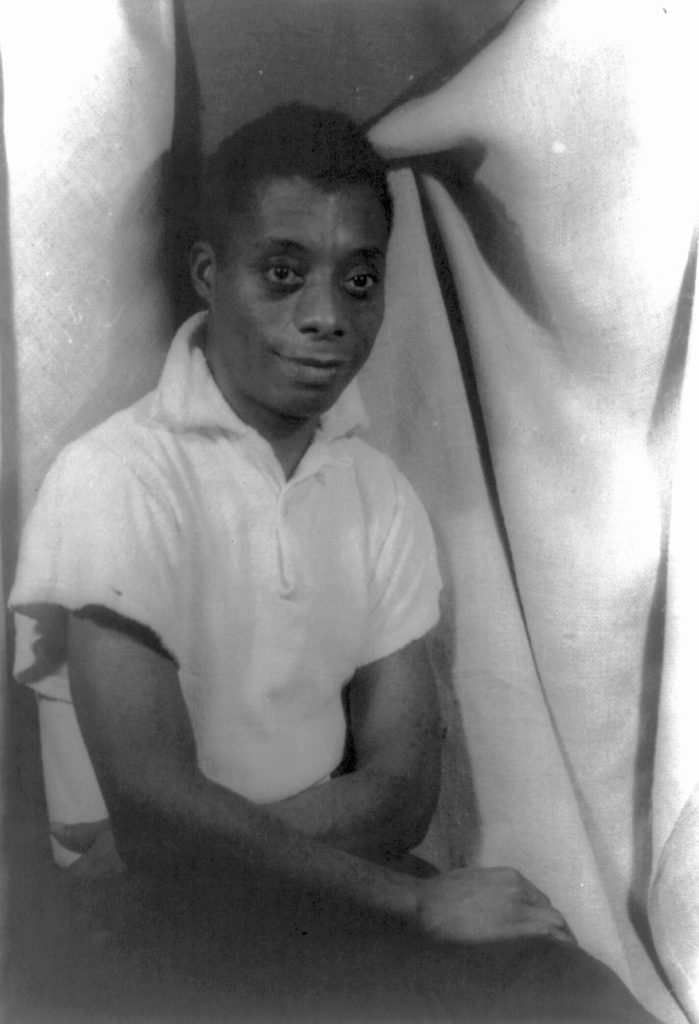APRIL 12, 2017- The Schomburg Center for Research in Black Culture at The New York Public Library, today announced acquisition of the personal archive of literary icon and social critic, James Baldwin. The archive includes 30 linear feet of handwritten letters and manuscripts; handwritten and typed drafts of essays, novels, and short stories; unpublished and published creative works in their nascent and final stages; galleys and screenplays with handwritten notes and fragments; interviews, telegrams, personal photographs, correspondence and audio recordings. The comprehensive collection offers an intimate, in-depth examination into Baldwin’s creative life that spans the entirety of his literary career.
Born in Harlem during the Harlem Renaissance, Baldwin’s contemplations on American race relations in both prose and poetry made him one of the foremost, respected, and sought-after writers and public intellectuals of his time. Baldwin’s writing and commentary remain highly relevant and resonant today, provoking a contemporary resurgence of interest in his life and work.
The Baldwin archive is a rich trove of manuscripts, typescripts, and audio tapes, the breadth and depth of which make it indispensable to understanding fully the significance of Baldwin’s career as a writer and as an engaged public man of letters. This archive will enable researchers to trace the textual evolution of virtually all of Baldwin’s writings across his whole career, from notes to his first novel Go Tell It On the Mountain to each of his other novels and essays.
His novels are found in many forms, including heavily reworked manuscript drafts or significant manuscript fragments, typescript drafts with his often copious manuscript annotations, and even dramatic adaptations of Giovanni’s Room. Draft manuscripts and typescripts of his poetry and his important reviews are also present. In addition, the archive contains reel-to-reel tapes, audio cassettes, and other audio media awaiting discovery.
The James Baldwin archive was acquired through the generosity of the Ford Foundation, Katharine J. Rayner, James and Morag Anderson, the John S. and James L. Knight Foundation, and New York Life. Support for processing has been provided by the Arcus Foundation.
This acquisition places the Schomburg Center as the premier institution for research into James Baldwin’s intellectual, cultural, and social life.
“We are more than excited to have James Baldwin return home to Harlem,” says Kevin Young, Director of the Schomburg Center. “Baldwin’s amazing collection adds to our ever-growing holdings of writers, political figures, artists, and cultural icons across the African diaspora. With the current resurgence of interest in Baldwin’s works and words, and renovation of our own spaces from the main gallery to the Schomburg Shop, the timing couldn’t be better for Baldwin to join us at the Schomburg Center. As a writer myself, I am eager for students, scholars and other writers—I count myself among all three—to have the opportunity to see his profound writing process up close.”
“Malcolm X, Lorraine Hansberry, and Maya Angelou all have collections at the Schomburg Center and Baldwin was their colleague. His papers not only complement theirs, but offer researchers a fascinating look at the Civil Rights and the Black Power movements, through the works of these seminal figures,” says Steven G Fullwood, Associate Curator of the Manuscripts, Archives and Rare Books Division.
Items from the Baldwin Archive will be on limited public display from April 13-17 as part of the exhibition The Evidence of Things Seen: Selections from the James Baldwin Papers. Photographs of James Baldwin from the Schomburg’s existing archive will be included in the display.
Highlights from the James Baldwin Archive and The Evidence of Things Seen: Selections from the James Baldwin Papers exhibition include:
- The Amen Corner playscript with inscriptions and The Amen Corner Playbill with Signatures from the Cast The Amen Corner, first published in 1954, is one of two plays written by James Baldwin. Covering topics such as the Black church, poverty, and Harlem, inspiration for, The Amen Corner, was likely drawn from Baldwin’s real life encounters and experiences as the stepson of Harlem preacher, David Baldwin.
- On Martin Luther King, essay In this insightful inscription, Baldwin, recounts his first, and last encounters with his dear friend and fellow freedom fighter, Martin Luther King Jr, one of the three subjects noted in the recent film, I Am Not Your Negro. Here, Baldwin, intimately describes the phone call he received while working on a never released screen adaptation, of The Autobiography of Malcolm X, with notable actor, Billy Dee Williams, the notifying him that King had been assassinated.
- Letter to my Sister, Ms Angela Davis “Letter to my Sister, Ms. Angela Davis”, was written by, James Baldwin, in November of 1970, just one month after Davis’ arrest in New York City by FBI agents. In the letter, Baldwin, shares sentiments of solidarity with Davis, and recounts his then recent experiences speak out about her legal case on the radio, television, and in Germany.”
- Just Above My Head These four handwritten notes provide insight into Baldwin’s character development process On these notes, Baldwin jotted down various ideas about, Hal, Arthur, Stanley, and Paul, such as their birthdates, dream states, and locations of birth. Notes on Beauford Delaney Noted Harlem Renaissance painter, Beauford Delaney, has been referred to as the “spiritual father” of James Baldwin. Delaney and Baldwin, first encountered one another when, Baldwin was 15 and fostered an artistic relationship that spanned several decades. Baldwin’s France home became Delaney’s, haven in the latter years of his life.

